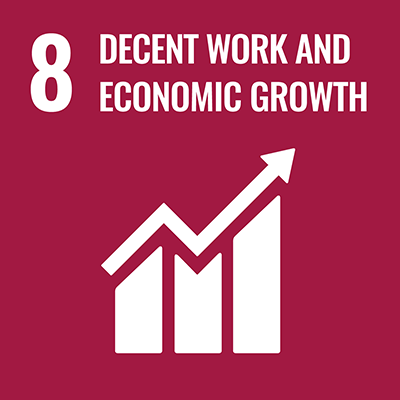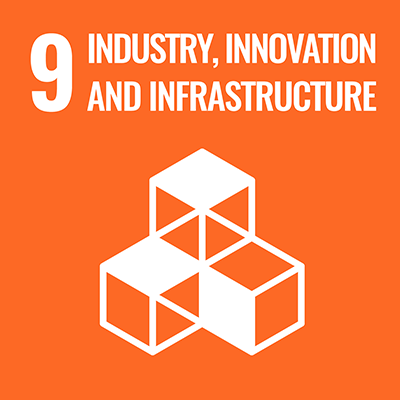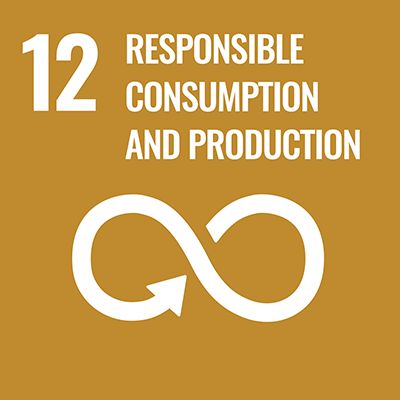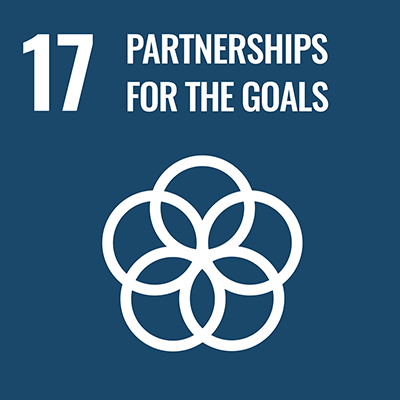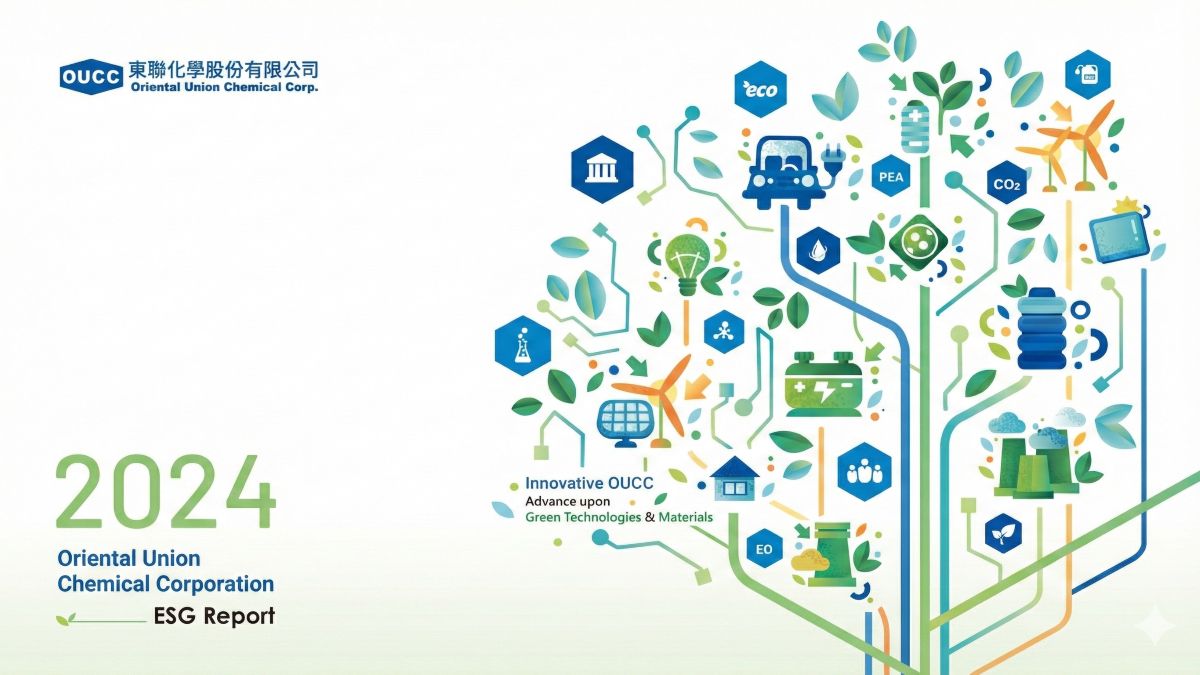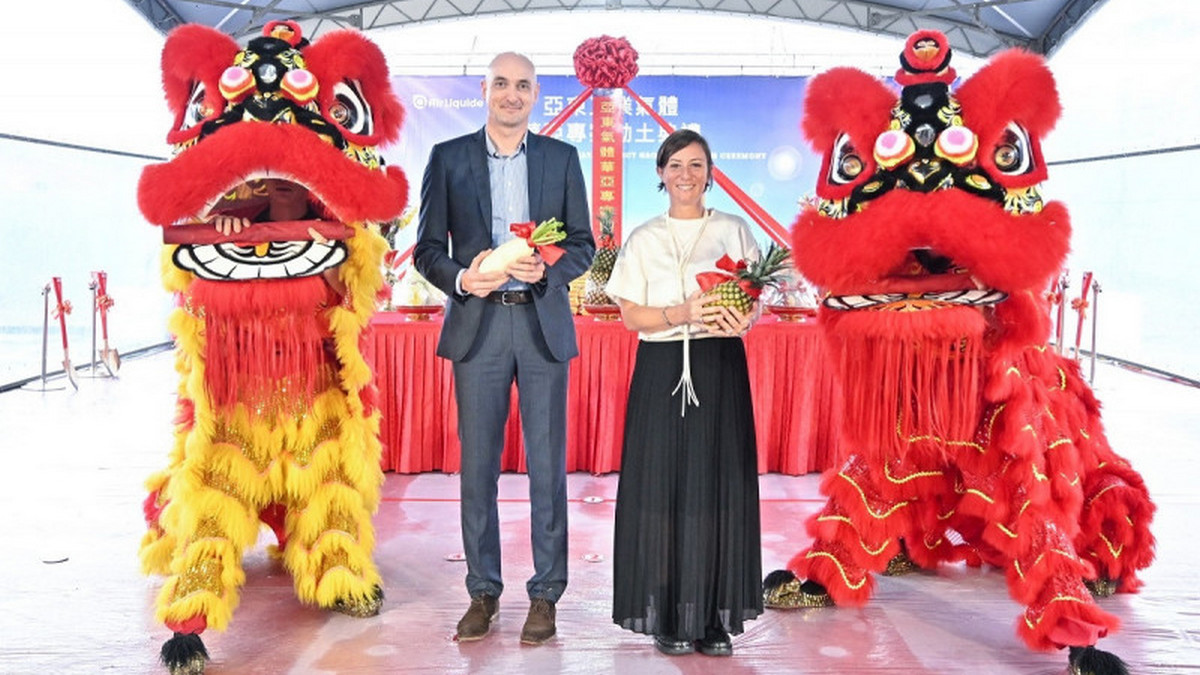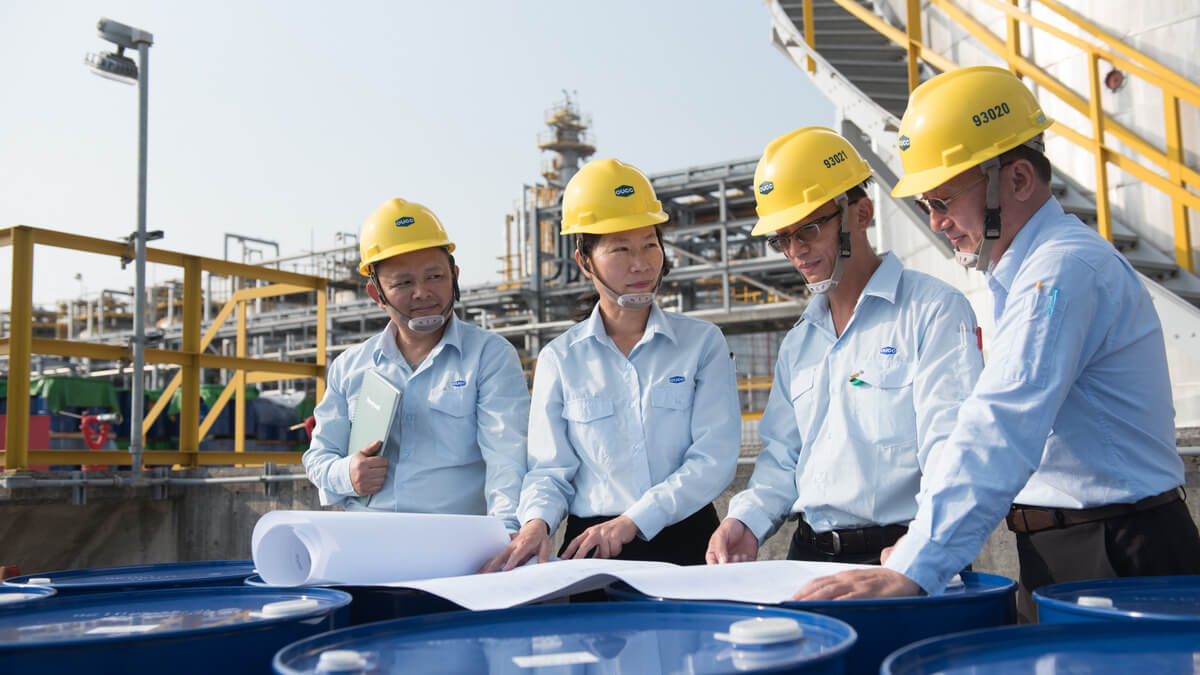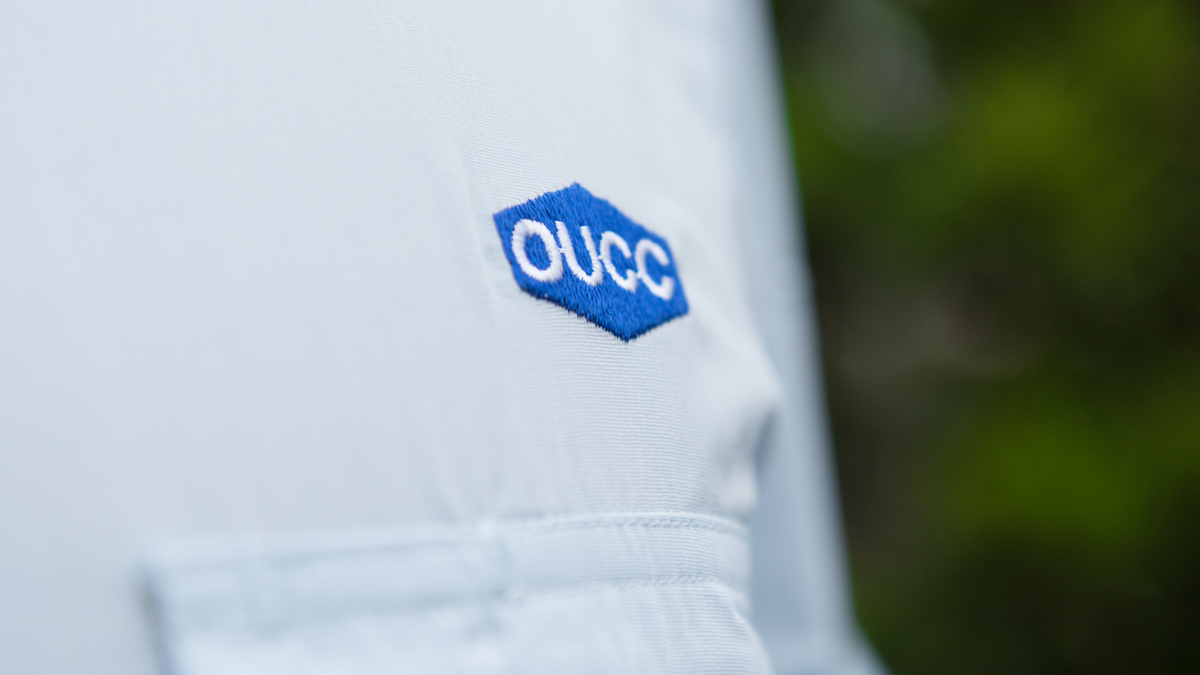From a Single Raw Material to 380 Products, OUCC's Transformation into a Carbon Department Store
OUCC has derived nearly 400 products from a single raw material. It is also Taiwan's first company to capture carbon and convert it into semiconductor-grade carbon dioxide. Now, it wants to become the carbon department store and undergo transformation despite facing numerous challenges. How did Chairman Hsu's words in the boardroom accelerate this transformation?
OUCC's Lin-Yuan Plant Assistant Vice President, William Chen, recalls that when he first joined the company over 20 years ago, OUCC only produced one product: ethylene glycol (EG) made from ethylene oxide (EO), which is used as a raw material for polyester fiber, engineering plastics, and PET bottles.
It was like a bakery that only made one type of bread, and the machines were fully automated. All you had to do was watch them operate, and if there was a problem, you dealt with it. "Life was good," he said. There were probably only ten customers at the time, "and we could visit them all in two days."
Now, OUCC has over 400 customers, and they don't just produce EG. They produce up to 380 different products. It's like having one type of flour, but having to make hundreds of different types of bread, pastries, and even different gift box packaging. It's a far cry from the past.
"Even if the boss asks us to make a car out of flour, we have to do it," William Chen joked.
They have no choice but to do so, as not doing so would mean no future. (Photo by Wang, Jian-dong)
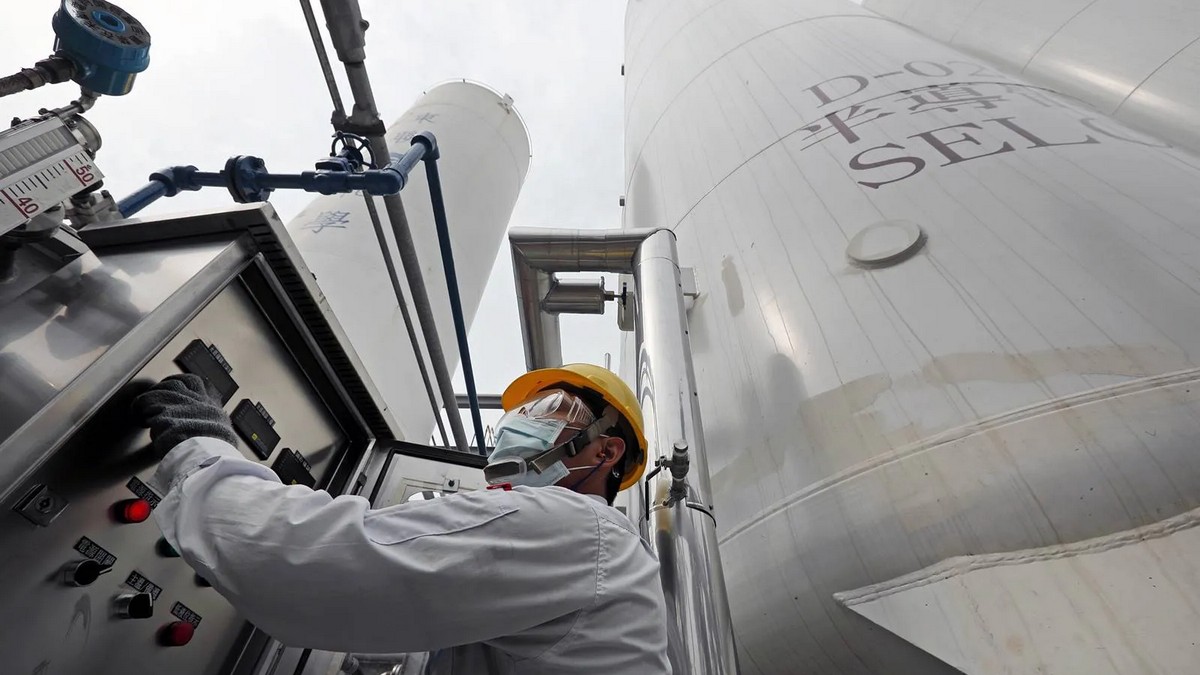
The God of Management Once Interested in
Victoria Peng, the executive vice president of OUCC, joined the company in 1976. She said that OUCC was a key player during the era of the Ten Major Construction Projects, when the government vigorously supported the import substitution of raw materials for the textile industry. Its main product, EG, is the raw material for synthetic fibers, and even Wang, Yung-ching, the God of Management in Taiwan, once considered investing in the company.
Ten years ago, after the current president, Justin Tsai, took office, OUCC began a complete transformation.
The biggest change was to convert the epoxyethane (EO), which was previously only used to produce EG, into various specialty chemicals.
This was because the survival crisis was imminent.
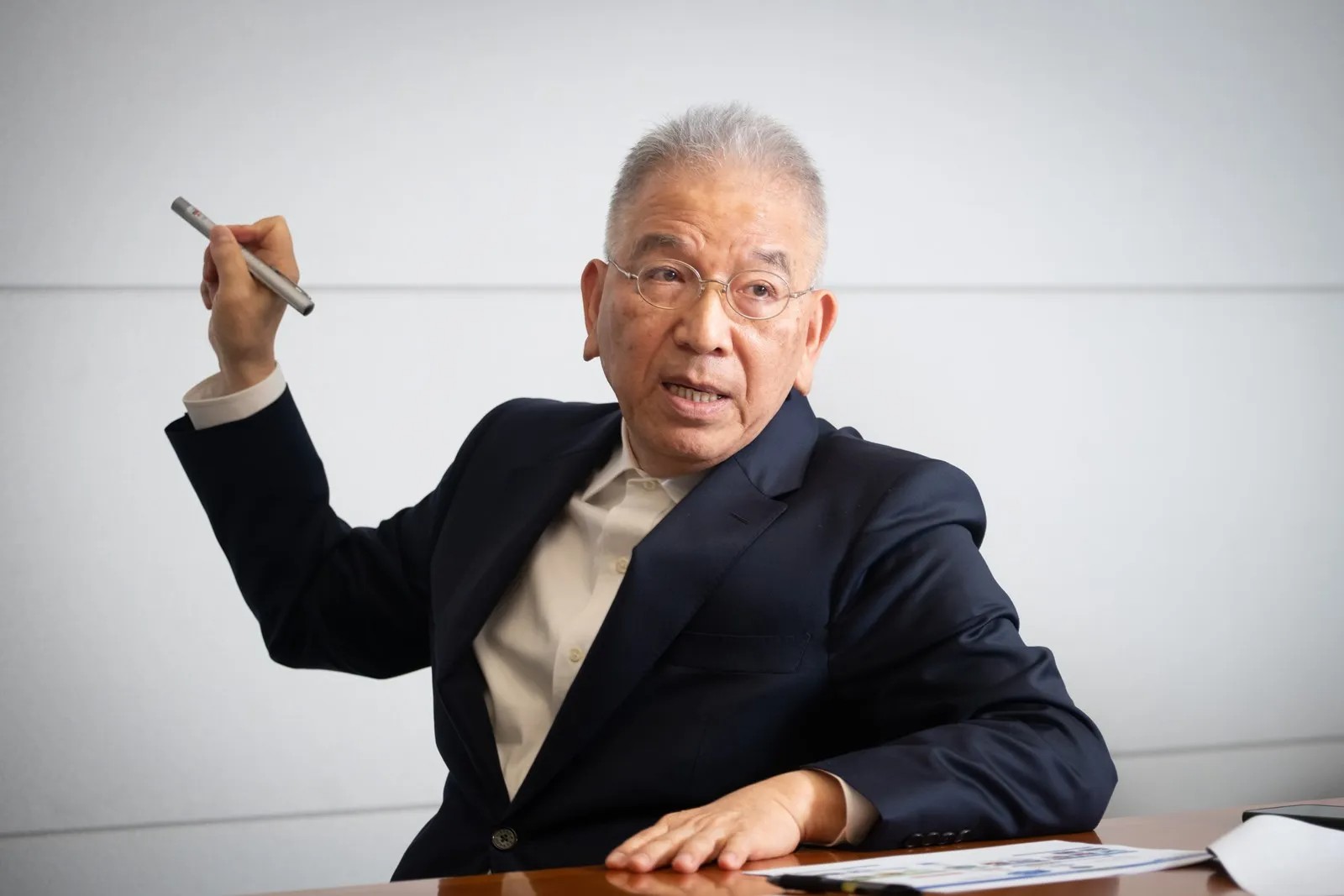
OUCC President Justin Tsai leads the Company for transformation, from one single product to specialty chemicals(Photo by Wang, Jian-dong)
Justin Tsai previously worked for China Petroleum for 30 years before retiring 10 years ago, when he was approached by the Chairman, Douglas, to join the company. Tsai admitted that at first, he was reluctant and thought that there was nothing special about making EG at OUCC.
Furthermore, he had seen that the annual production capacity of EG in mainland China was going to exceed 50 million tons, while global demand was only 35 million tons. "In the future, it will definitely be losing money for every ton it sells," he said.
However, he later decided to accept the challenge and lead OUCC's transformation.
The Range of Specialty Chemicals Includes Up to 380 Items
When Tsai first proposed his plan, many people were skeptical. He reported to the board of directors, hoping to change from making EG to producing specialty chemicals. Many directors questioned, "Will anyone want new products?"
No one knew if there was a market for them, so they had to do it with their heads down.
One good example is a big paint manufacturer that began collaborating with OUCC in 2012 to develop solvent-free coating resin materials. After three years of development, they created a product based on Ethylene Butyl Ether Glycol (EB), which entered the environmentally-friendly coating market, removing the pungent odor of volatile organic compounds.
This process is similar to developing new dishes in the kitchen. According to Victoria Peng, when the research and development team learned of new requirements from the customer's end, they were asked to continue trying and failing. She often received samples of cleaning agents from the R&D team to try herself.
Now they have a recipe book of up to 380 items. Moreover, the most important thing is that the gross profit margins of new products are higher than those of ethylene glycol (EG), which was previously sold at a loss. The profit margin for selling cakes is much higher than that for selling a single loaf of bread.
Therefore, OUCC has built three EO derivative factories and a semiconductor-grade carbon dioxide purification factory in 2022. They will also add a polycarbonate diol (PCDL) production line this year, which is a raw material for high-end PU products.
Currently, the revenue from OUCC's specialty chemicals accounts for over 60% of Taiwan's total revenue.
Transformation Direction 1: High-value and Differentiation
Change is never easy.
Two transformation keywords proposed by Tsai are "Differentiation" and "Green".
Because of the enormous chemical production capacity in mainland China, Taiwan must break away from items that consume energy and do not generate profits. Therefore, he decided that the first transformation direction is high-value and differentiation.
The key is on diversity with small quantities. They derived 380 products from the same raw material, ethylene oxide (EO). It's like making only one type of bread from flour before, but now they can make cakes and pastries with various flavors and shapes, and the packaging is also different.
For example, ethanolamine (EA) can be used as a photoresist stripper, ethylene carbonate (EC) can be used as a battery electrolyte, polyether amine (PEA) can be used as a curing agent for wind turbine blade epoxy resin, and ethylene amine can be used as a pharmaceutical intermediate, etc.
Moreover, the global competitors of these products are all advanced countries. For example, most polycarbonate diols are produced by Japanese companies. PEA used in wind turbine blades to improve toughness is expected to provide to European wind turbine manufacturers this year.
Transformation Direction 2: Carbon Reduction, Energy Conservation
The second direction is carbon reduction and energy conservation.
OUCC is currently the only company in Taiwan that captures carbon dioxide during the production process and purifies it to a precision level of at least 6N (99.9999%) for use in semiconductor production, with an annual recycling capacity of 100,000 tons of carbon dioxide.
This technology can be traced back to 1999 when Chi Mei needed polycarbonate (PC) to produce plastic materials and formed a joint venture with Japan's Asahi Kasei. The joint venture then sought out OUCC to provide the technology to capture carbon dioxide, a byproduct of the epoxy ethane (EO) process, to produce ethylene carbonate (EC), which was then used to produce PC resin for Chi Mei. This circular economy has been in place for 20 years.
Carbon dioxide has many uses, Tsai said. OUCC initially could only capture 40,000 tons of carbon dioxide per year. With continuous improvement in technology, it can now capture 100,000 tons per year, with 30% being purified into electronic-grade carbon dioxide for use in semiconductor production and the remaining 70% used for the production of green chemicals, including raw materials for lithium battery electrolytes, cleaning agents, and concrete additives, all of which have higher gross profit margins than EG. (Photo by Wang, Jian-dong)
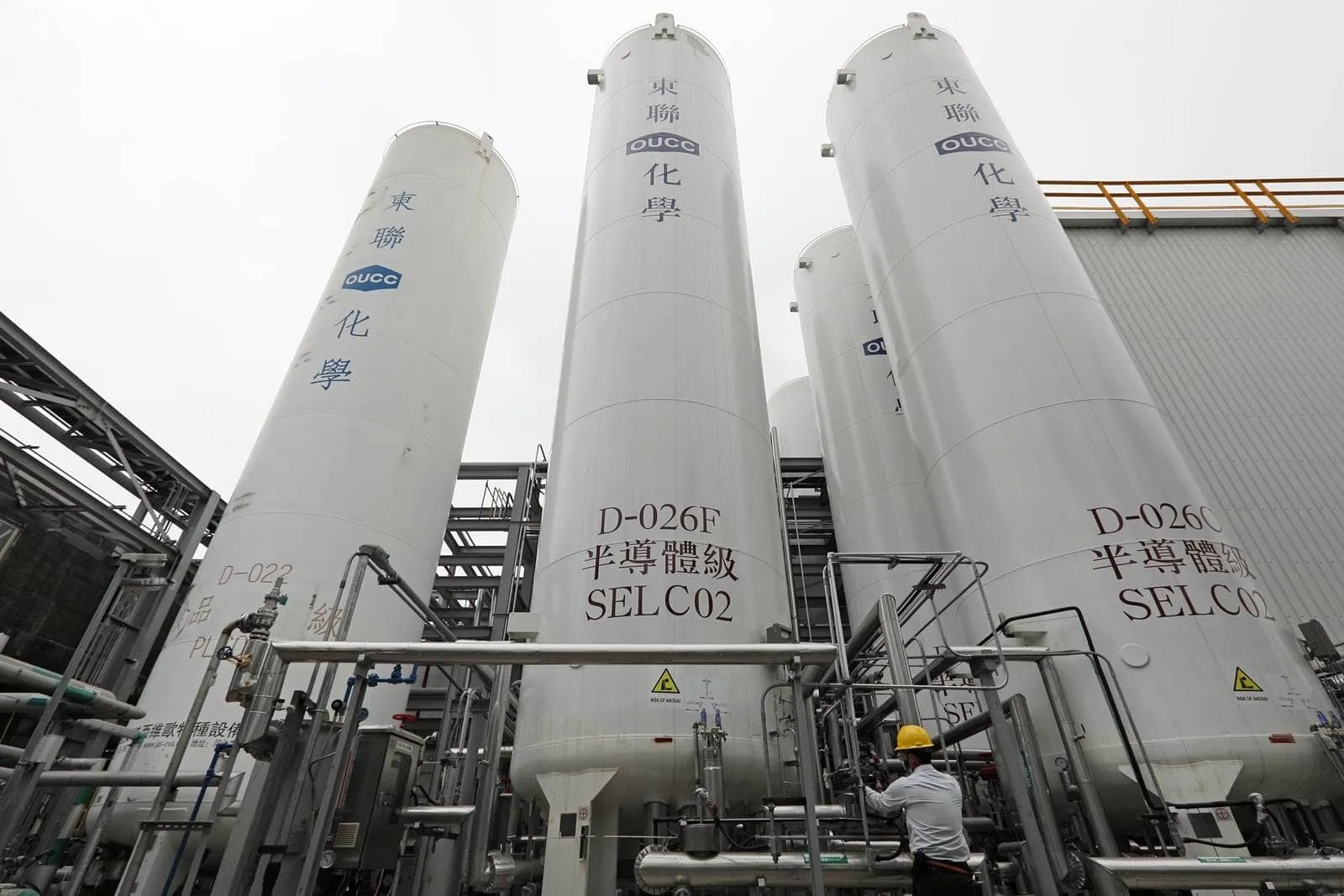
"Clean Chips" and "EUV Machines" Both Require "Carbon Dioxide."
In the semiconductor manufacturing process, carbon dioxide has multiple uses. Keith Wu, the executive vice president of OUCC Specialty Chemicals Sales, pointed out that liquid carbon dioxide can replace organic solvents to clean chips, solving the problem of residual and volatile organic compounds. At the same time, carbon dioxide can also be used for the laser light source of EUV machines. The current process is undergoing certification by semiconductor companies and is expected to be shipped soon.
The electronic-grade carbon dioxide purification plant located at the OUCC Lin-Yuan factory was just completed in September of last year. Currently, about 400 tons of electronic-grade carbon dioxide are sold per month, and it can be increased to a maximum of 1,500 tons, leaving plenty of room for growth.
Tsai admitted that the company had been producing commodity products for nearly 40 years, and the transformation was bumpy. Changing the company culture was the most critical but also the most challenging.
It wasn't until a board meeting a few years ago that things began to change.
At that time, Ya Dung Ready Mixed Concrete (YTRM) purchased concrete additives from external suppliers every year to help the concrete accelerate solidification. When the Chairman of the Group, Douglas Hsu, discovered this, he expressed dissatisfaction, saying, "The Group already has OUCC. Why purchased from outside?"
Hsu's words prompted YTRM and OUCC to research for more than a year and eventually develop their own concrete additives. Not only did they achieve vertical integration within the group, but they also enabled OUCC to venture into the field of building chemicals and find external business opportunities. Customers are now located in Taiwan, Southeast Asia, Europe, and Turkey, among other countries.
Thus, the transformation project began at two levels, one in the south and the other in the north, and the road ahead was full of challenges.
Hsu's Words Promote North-South Transformation
At the Lin Yuan factory in Kaohsiung, they face the challenge of changing their production methods.
Since the transformation, OUCC, which had only produced one type of bread for 40 years, has added four new product lines: daily use, solvents, construction, and fine chemicals.
This means that the factory now requires manpower who understand different chemicals to meet the transformation needs. In addition to recruiting externally, employees who only knew how to make one product must also learn and adapt to the changes.
Many senior employees have resisted this change.
William Chen said they encourage transformation, but do not force it. Many people have only known how to make EG their whole lives, but now they have to learn many new tricks. Chen said those who are not willing to accept the change can stay in their original positions, but those willing to transform become engineers and can be promoted with a pay raise.
Of the four new production lines added last year, only about 10% were old OUCC employees, while nearly 90% were new employees.
In the R&D unit, many people are needed to develop new products, so in recent years, they have collaborated with schools to obtain key research and development talents.
Another aspect of the transformation is in the business aspect.
Chen, Weixun, the human resources manager of OUCC's Taipei headquarters, admitted that in the past, customer structure was simple, and the sales personnel did not need to go out. But with the diversification of products, the sales must actively develop new customers and sell new products. In the past two years, the sales department has undergone a significant change, with new hires accounting for 50%.
They are also currently devising a new reward system. From the previous system of a fixed bonus, they will now provide more incentives for the sales of specialty chemicals to strive for higher profits.
The transformation is gradually showing results. In 2022, specialty chemicals and carbon dioxide accounted for 65% of OUCC's revenue. OUCC has also gradually increased the production of specialty chemicals while reducing the EG production, from 430,000 tons in 2021 to 350,000 tons in 2022.
Transformation is difficult but necessary. "The world is changing, and if you don't change, you will die," said Tsai.(Photo by Wang, Jian-dong)
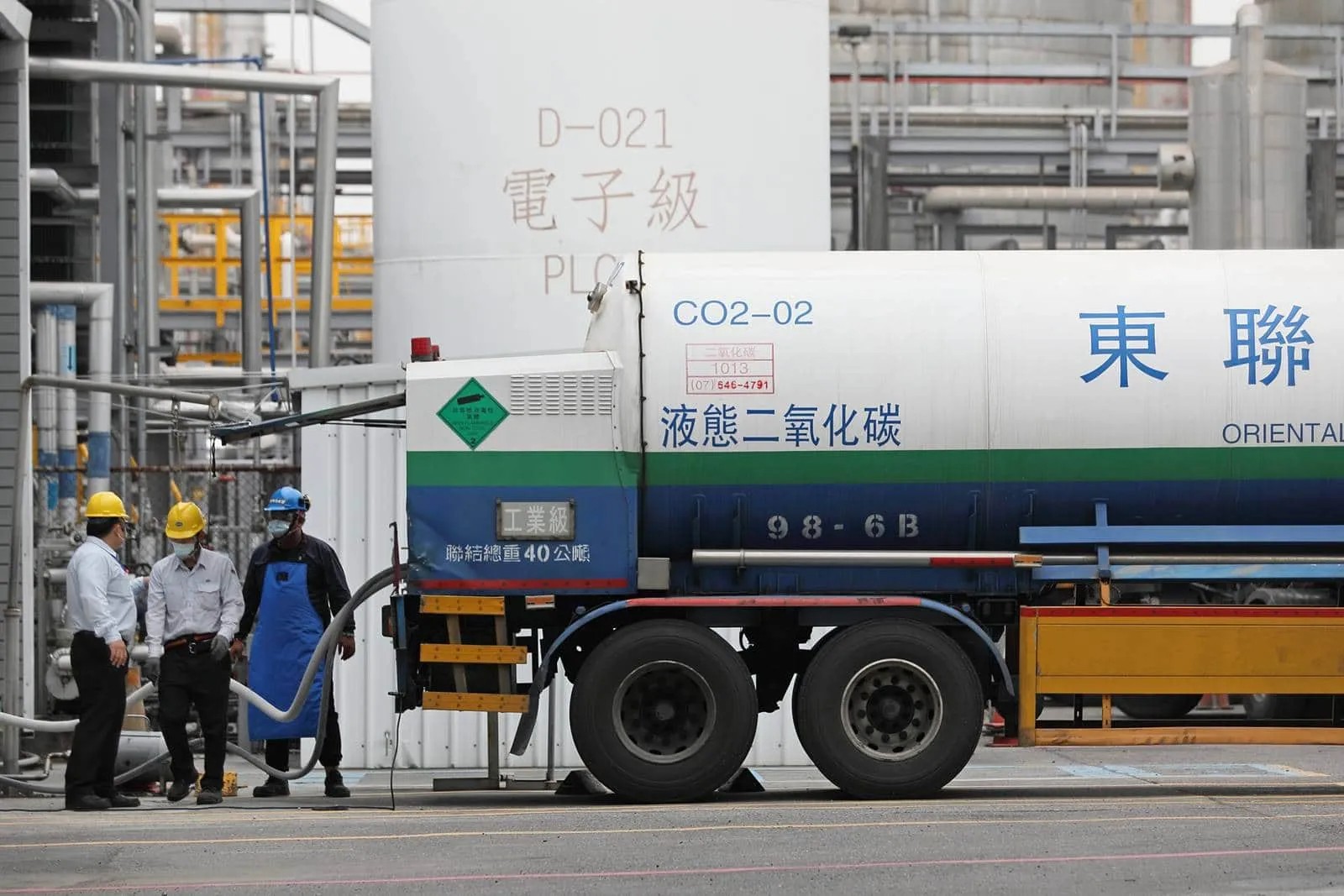
Helping More Companies Capture Carbon
He also has another new idea for transformation, which is to make OUCC into a department store for carbon dioxide. From the gas in soda, to clothing chemical fibers, concrete in homes, and EC, which can be used as an electrolyte for lithium batteries, OUCC can provide products using carbon dioxide as a raw material, making carbon reduction happen in all aspects of life.
Not content with just reusing carbon dioxide, OUCC hopes to help more companies capture carbon. Therefore, OUCC has also developed technology to turn epichlorohydrin into ethanolamine and ethyleneamine as carbon capture chemicals, helping more Taiwanese companies achieve carbon capture.
However, competition is fierce. Such as Changchun and Nan Ya, which are actively entering the electronic-grade carbon dioxide market. Changchun CEO Lin Su-Hon recently stated that all four factories in Changchun have electronic-grade carbon dioxide purification plants under construction and can start production in as little as a year and a half.
Tsai said that Taiwan's chemical industry has the greatest responsibility for reducing carbon. "We emit carbon, but the methods to reduce it are also in our hands," he believes that OUCC is ready to shoulder this responsibility.
【Profile】OUCC
Establishment/Year 1975
Chairman/ Douglas Hsu
President/ Justin Tsai
2022 Revenue/NT$22.08 (US$736 million)
Main Products/EG, specialty chemicals, electronic-grade carbon dioxide
Business and Company
News Type
UN SDG
Share
Download
Source
Common Wealth Magazine ESG Liu, Kuan-Yin



